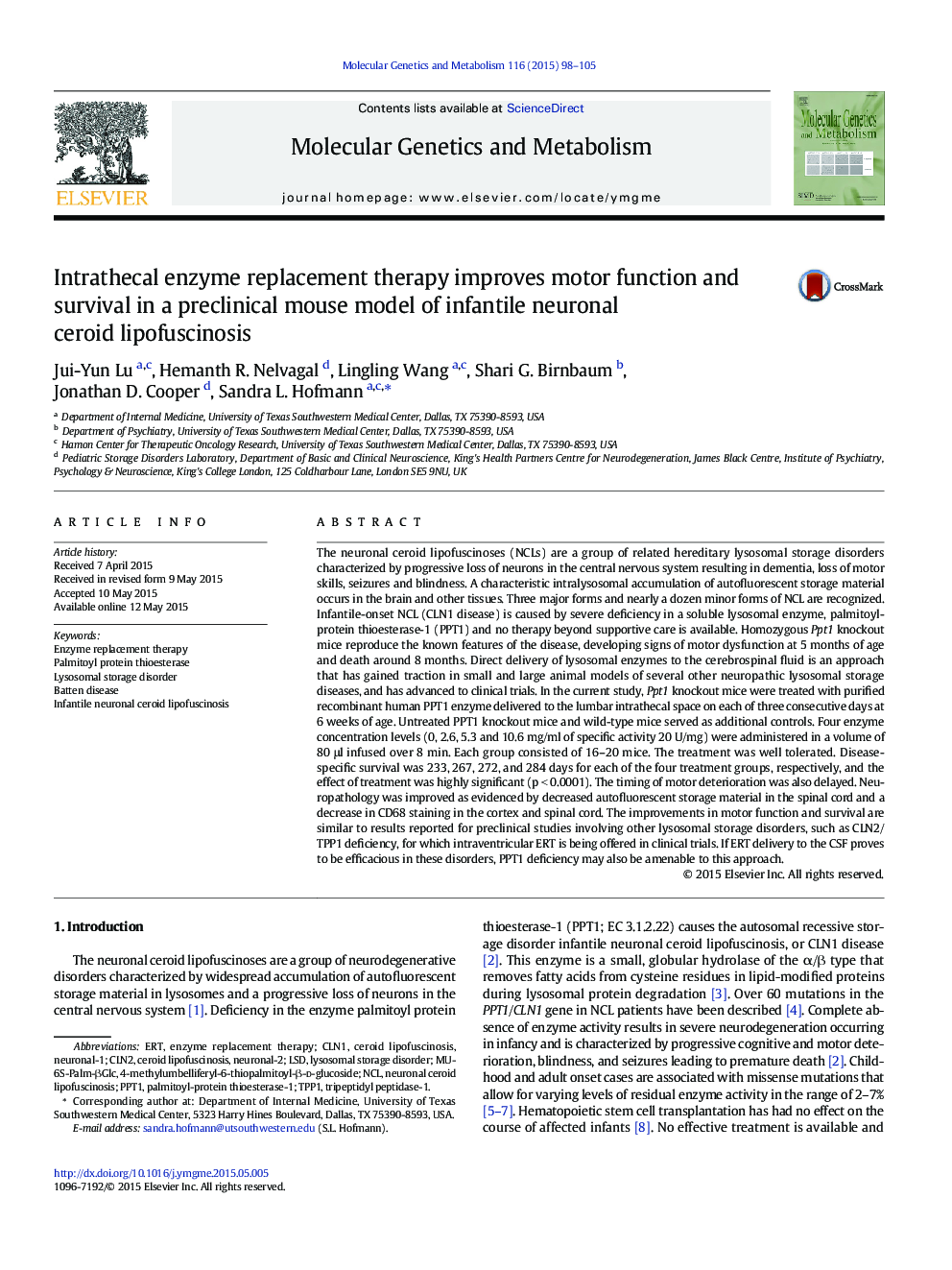| Article ID | Journal | Published Year | Pages | File Type |
|---|---|---|---|---|
| 8343771 | Molecular Genetics and Metabolism | 2015 | 8 Pages |
Abstract
The neuronal ceroid lipofuscinoses (NCLs) are a group of related hereditary lysosomal storage disorders characterized by progressive loss of neurons in the central nervous system resulting in dementia, loss of motor skills, seizures and blindness. A characteristic intralysosomal accumulation of autofluorescent storage material occurs in the brain and other tissues. Three major forms and nearly a dozen minor forms of NCL are recognized. Infantile-onset NCL (CLN1 disease) is caused by severe deficiency in a soluble lysosomal enzyme, palmitoyl-protein thioesterase-1 (PPT1) and no therapy beyond supportive care is available. Homozygous Ppt1 knockout mice reproduce the known features of the disease, developing signs of motor dysfunction at 5 months of age and death around 8 months. Direct delivery of lysosomal enzymes to the cerebrospinal fluid is an approach that has gained traction in small and large animal models of several other neuropathic lysosomal storage diseases, and has advanced to clinical trials. In the current study, Ppt1 knockout mice were treated with purified recombinant human PPT1 enzyme delivered to the lumbar intrathecal space on each of three consecutive days at 6 weeks of age. Untreated PPT1 knockout mice and wild-type mice served as additional controls. Four enzyme concentration levels (0, 2.6, 5.3 and 10.6 mg/ml of specific activity 20 U/mg) were administered in a volume of 80 μl infused over 8 min. Each group consisted of 16-20 mice. The treatment was well tolerated. Disease-specific survival was 233, 267, 272, and 284 days for each of the four treatment groups, respectively, and the effect of treatment was highly significant (p < 0.0001). The timing of motor deterioration was also delayed. Neuropathology was improved as evidenced by decreased autofluorescent storage material in the spinal cord and a decrease in CD68 staining in the cortex and spinal cord. The improvements in motor function and survival are similar to results reported for preclinical studies involving other lysosomal storage disorders, such as CLN2/TPP1 deficiency, for which intraventricular ERT is being offered in clinical trials. If ERT delivery to the CSF proves to be efficacious in these disorders, PPT1 deficiency may also be amenable to this approach.
Keywords
Related Topics
Life Sciences
Biochemistry, Genetics and Molecular Biology
Biochemistry
Authors
Jui-Yun Lu, Hemanth R. Nelvagal, Lingling Wang, Shari G. Birnbaum, Jonathan D. Cooper, Sandra L. Hofmann,
